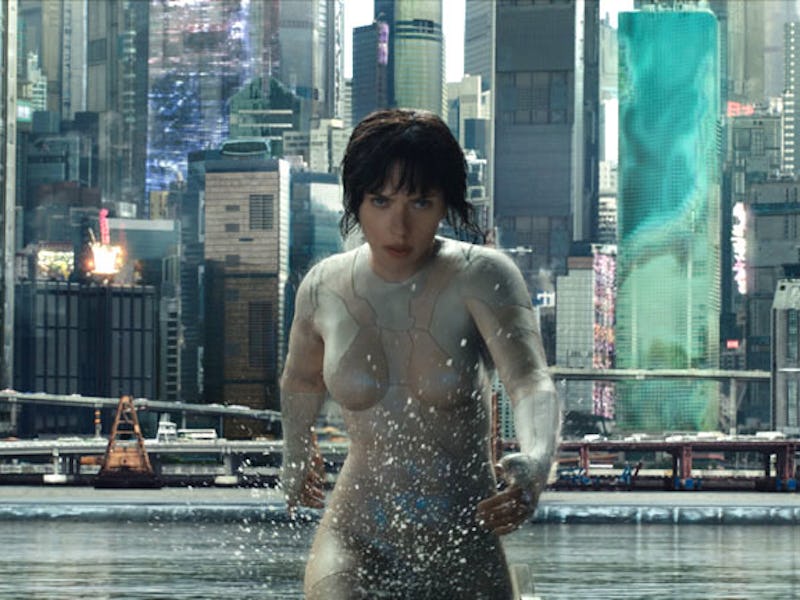Motoko Kusanagi, better known as “the Major,” is the cyborg hero of the famous manga, anime, and soon-to-be live-action film, Ghost in the Shell. The title itself refers to the idea that the Major was once fully human, but when she died, her spirit, or soul — her “ghost” — was put into a robot body. So, if she’s a ghost, she’s dead, right? Or, by being a cyborg animated by a human spirit, is the Major actually, “alive?”
The question of robot souls has been debated long before androids dreamed of electric sheep (and unicorns) in Blade Runner or C-3PO said “we’re doomed!” in Star Wars. In 1920, Czechoslovakian playwright Karel Capek wrote his famous play R.U.R., which most people agree is where we first got the word “robot.” Since then, science fiction has worried about whether or not robots were “alive,” from Mr. Data on Star Trek: The Next Generation to the hosts on Westworld. In terms of a philosophical verdict, the jury is still out, but proper bespoke robots like Data or Delores aren’t the same as cyborgs. Robots or replicants were never originally human whereas the Major was. And maybe still is, at least partially.
The word “cyborg” was created in 1960 by Manfred E. Clynes and Nathan S. Kline in a paper called “Cyborgs in space,” written for Rockland State Hospital in Orangeburg, NY and published by MIT. In it, the two scientists came up with the term, which loosely has come to describe human functions that have been “restored” and/or “enhanced” by mechanical additions. This means people who walk on prosthetic legs are, semantically, cyborgs.
From a certain point of view, a true cyborg has to have some organic component still left to qualify as a cyborg. If they go fully mechanical, then we’re dealing with a full-on robot or perhaps, more conventionally, an android. (Androids are usually robots that are specifically made to look like human beings.) Because the Major has her essence or “soul” put into a robot “shell,” things get a little dicey. Basically, she is an android, which makes her a robot, but if we consider her soul to be a biological or “human” component, then she’s a cyborg.
All of this puts the Major into the thought-experiment world sometimes described as a “Broom Paradox.” If you take a broom and replace the handle, it’s still the same broom. But if you later replace the brush on that broom, does it remain the same? In the Doctor Who episode “Deep Breath,” the Doctor confronts a true cyborg with this exact question, and concludes, “There’s not a trace of the original you left!”
And yet, the Major is 100 percent herself despite the fact her entire body was manufactured. Most would agree that Murphy in RoboCop is, in fact, still a human being, with the last line of the original film affirming such a claim. So, even if we’re able to talk ourselves out of the Major being a cyborg, we can’t classify her as an automaton, or a robot without free will. The story may seem like it’s about a “ghost,” but the Major’s very active robot shell proves she is alive.
